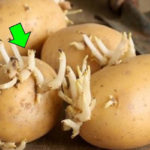Water spinach is ranked among the top vegetables in the leafy vegetable group that are at risk of containing many toxic substances such as pesticides, growth stimulants, lead contamination, or being grown in foul drains… In the long term, if you regularly consume these tainted vegetables, it is very dangerous for your health.

If the water from blanched water spinach turns black, it indicates that the vegetables have been treated with excessive chemical fertilizers.
According to analysis by experts, water spinach is a hollow-stem vegetable and if grown in a polluted environment, it easily absorbs heavy metals. Among them, the most serious is lead contamination.
Acute lead poisoning causes nausea, vomiting, convulsions, and coma. Chronic lead poisoning can cause neurological disorders, insomnia, headache, fatigue, liver and kidney damage… Children who consume lead-contaminated food may experience stunted growth and reduced intelligence. Women unknowingly consuming products with lead during pregnancy will have serious effects on the fetus.
Not to mention that farmers, in pursuit of profit, use various stimulants and pesticides and harvest vegetables off schedule, then sell them in the market…
To ensure safety when consuming water spinach, housewives must be very careful from the selection to processing stages:

It is best to wash and drain the water spinach, then put it in a storage bag in the refrigerator for a few days before consuming it. Illustrative photo.
According to sharing by Associate Professor Nguyễn Thị Lâm (Former Director of the National Institute of Nutrition), many housewives often only wash vegetables with tap water, which only removes the dirt but not all the parasites in the vegetables.
To ensure safety, it is recommended to thoroughly wash each water spinach stem. Soak the water spinach in diluted saltwater before cooking. It is best to wash the water spinach and then let it drain before putting it in a storage bag in the refrigerator for a few days before consuming it (at this time, the amount of pesticides will be reduced). Make sure to cook the vegetables thoroughly (do not eat raw or undercooked water spinach).
When boiling water spinach, do not cover the pan because this will prevent the chemicals in the vegetables from escaping, trapping them inside and making it easier for your family to be poisoned or infected.
Therefore, the best way to cook water spinach is to leave the pan open so that the vegetables become greener and ensure health safety.
How to identify safe water spinach
– When buying water spinach, avoid buying bundles with larger stems than usual.
– Do not choose water spinach that is too crisp when freshly broken, dark green leaves, and shiny surfaces from a distance, as these vegetables may have been treated too much with nitrogen or leaf fertilizers.
– When blanching the vegetables, if the blanching water is light green, and the cooling water turns dark green with black sediment, it indicates that the vegetables have been treated with excessive chemical fertilizers.
Especially when washing water spinach, if you see too many bubbles, do not use it as there is a risk of chemical contamination.
Note: People with inflammation, joint pain, gout and kidney urinary tract infections due to stones, and those undergoing internal and external medical treatments… should not consume water spinach.
According to Giadinh.net
8 Common Mistakes People Make with Cutting Boards
Are you using your cutting board correctly? Many Vietnamese households rely on cutting boards in their kitchen, but not everyone knows how to use them properly, especially when it comes to wooden cutting boards. Check out these 8 mistakes to avoid when using a cutting board to ensure both hygiene and safety for everyone in your family.
Is Refrigerated Leftovers Linked to an Increased Risk of Cancer?
Dr. Lam Van Man, Head of Research, Development and Technology Transfer Department of the Institute of Safety Food, has warned of the risk of food poisoning when reheating leftovers from the refrigerator. But what should we be aware of when it comes to the possibility of these leftovers causing cancer? Here, we explore what the experts have to say on the matter and offer some tips for safe eating.
Preserving Leftover Food from the Tet Holiday
With the beginning of the Lunar New Year, many households are stocking up on food to celebrate the festive occasion. While keeping food in the refrigerator is convenient, it can also be harmful to users if not done correctly. We have compiled a few tips to help ensure food remains fresh and safe to consume during Tet.














